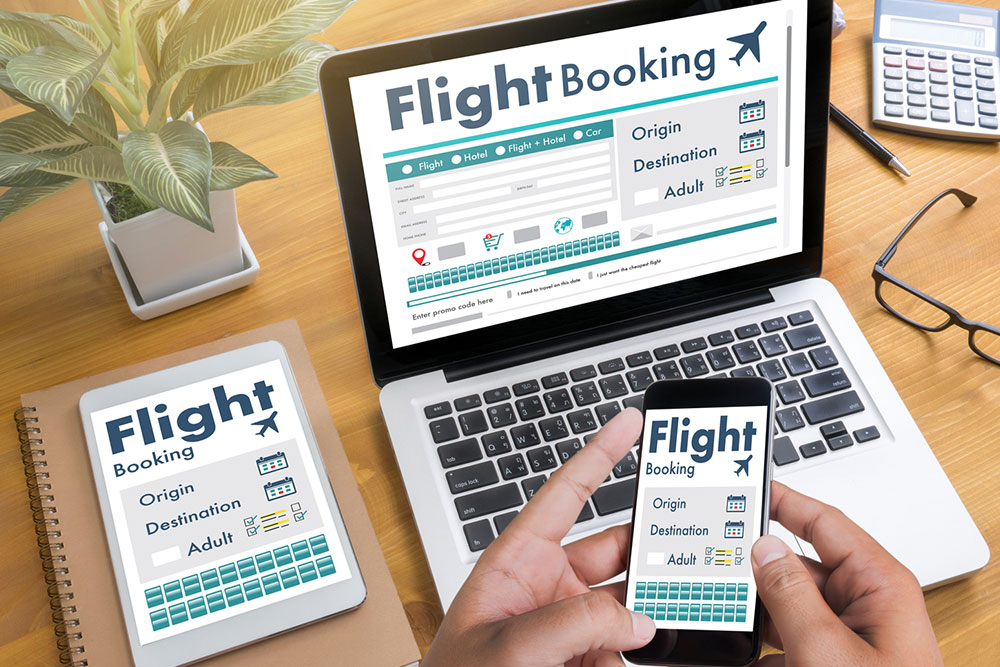
Common mistakes to avoid when booking a flight
Planning a flight journey involves various decisions, and one of the most important is booking a flight. With the abundance of options available, it can be overwhelming to pick one. From choosing the correct date and time to securing the best deals, travelers often need help while booking tickets. Mistakes during these processes might result in unexpected fees and changes in the itinerary. Avoiding mistakes is crucial to ensure a stress-free and easy journey.
Ignoring flexible dates
Travelers often miss out on potential savings when they stick to specific trip dates without taking flexibility into consideration. Depending on the day of the week, season, and even time of day, ticket rates might vary. By being open to changing travel dates, one can take advantage of cheaper flights and save significantly on their trip.
Overlooking alternate airports
Many individuals opt for their nearest major airport when booking flight tickets without considering alternative nearby airports. Unbeknownst to many, such airports – especially those serviced by budget carriers or have less crowding – may offer cheaper fares and more convenient flight times. Not exploring all nearby airports may lead to people being left with limited options and missing out on potential savings.
Not comparing prices
To get the best deal and avoid overpaying for one’s journey, it is important to check and compare prices offered by various online travel companies, airline websites, and flight comparison tools. Research and compare the pricing on several platforms to find the most affordable flight options.
Overlooking hidden fees
When booking a flight, most travelers often focus on the initial ticket rate and overlook the chances of additional fees that may apply. This includes baggage fees, seat selection fees, booking fees, and more. It is important to carefully review the fine print and factor in all potential fees to compare the total cost of each flight option accurately. Sometimes, opting for a slightly more expensive ticket with fewer additional fees can result in a better overall value. Hidden fees are extra charges imposed by airlines or booking platforms for various services or amenities not included in the base fare. These hidden fees can vary widely and may include-
- Baggage fees- Airlines often charge fees for checked baggage, oversized baggage, and overweight baggage. These fees can vary depending on factors like the airline, route, and the number of bags one carries.
- Seat selection fees- Some airlines charge passengers to select specific seats, such as those with extra legroom or located in preferred sections of the aircraft.
- Booking fees- Certain booking platforms may impose booking fees or a limited service charge on top of the ticket price, increasing the overall cost of the flight.
- Change and cancellation fees- Airlines typically charge fees for making changes to one’s itinerary or canceling the booking, especially for non-refundable tickets.
- In-flight amenities- Additional fees may apply for in-flight amenities such as Wi-Fi access, onboard entertainment, and food and beverage services.
Booking too early or too late
Finding the right time to book a flight journey is crucial. While booking too early may result in missing out on last-minute deals, booking too late can lead to higher prices as the availability of seats decreases closer to the travel date. Travelers should book their flight at the optimal time, typically several weeks to a few months in advance, to secure the best combination of price and availability.
Not signing up for fare alerts
Fare prices fluctuate frequently, making it hard to determine the best time to book a flight. Fortunately, many travel websites and applications have fare alert features that notify travelers when costs for their desired itinerary decrease. Forgetting to sign up for fare alerts is a missed opportunity to stay informed and snag exciting deals when prices drop.
Failing to double-check details
In the rush to book a flight, it’s easy to overlook important details such as travel dates, times, and passenger information. Always double-check these details before confirming one’s booking to avoid costly mistakes and inconvenience. Take the time to review the flight itinerary carefully and ensure that all information is accurate to avoid any surprises or complications later on.
Disregarding flight restrictions
Each airline has its own set of restrictions and policies regarding changes, cancellations, and refunds. Overlooking these restrictions can result in financial penalties or losing one’s fare altogether. Understand the airline’s change and cancellation rules before making a reservation; for extra peace of mind, consider getting travel insurance.
Ignoring loyalty programs and benefits
Frequent passengers and loyal customers can take advantage of special perks, discounts, and rewards through airline loyalty programs. Ignoring these programs and benefits can lead to a missed opportunity to maximize savings and improve travel experience. If an individual frequently travels with a particular airline, consider joining their loyalty program to unlock exclusive rewards and benefits.
Rushing the booking process
Lastly, rushing the booking process is a common mistake that can lead to oversights, missed opportunities, and unwanted stress. Take time to research, compare options, and carefully review the terms and conditions before making the final booking decision. By approaching the booking process carefully, one can avoid costly mistakes and enjoy an easy and pleasurable travel experience.
While booking flights, it is important to exercise caution and avoid common mistakes that may lead to unwanted expenses and might affect one’s travel experience. By avoiding these errors, one can optimize savings, improve convenience, and be stress-free when traveling. Remember to review booking confirmations and seekseek help from customer service when there are concerns.


